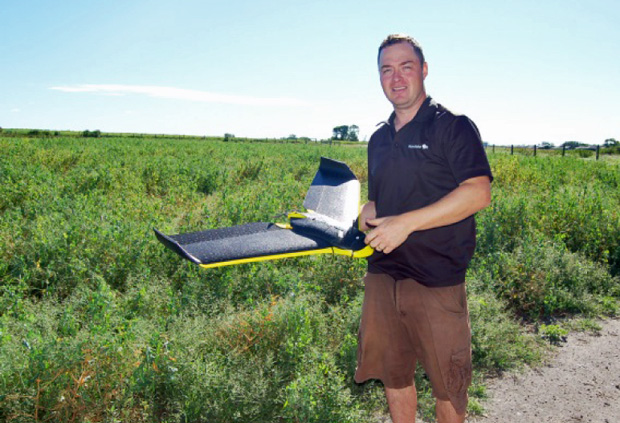Agriculture and Agri-Food (AAFC) scientists have been doing experiments in the fields using drones and in greenhouses using hand held devices that test for waterlogging tolerance. The data collected will provide information about barley genotypes response to waterlogging stress in Manitoba growing conditions and enable identification of waterlogging tolerant genotypes to be used in the barley breeding programs.
Waterlogging is a state in which excess water in the root zone affects the oxygen concentration in the soil which negatively impacts plant growth causing yield losses.
Scientists from AAFC’s Brandon Research and Development Centre (Brandon RDC) are working collaboratively with Manitoba Agriculture to collect information and data such as Enhanced Normalized Difference Vegetation Index (ENDVI) and Green Normalized Difference Vegetation Index (GNDVI) that will help determine the stress levels caused by excess moisture. A large collection, 341 to be exact, of two-row barley genotypes from around the world are being tested for chlorophyll concentration and fluorescence, as well as indicators of plant stress, using various instruments, including UAV (Unmanned Aerial Vehicle) technology. UAVs, or drones, are a much faster way of monitoring the amount of stress induced in plants since they can collect the data in a shorter time and requires less people and equipment to be involved.
Drone field data collection began in mid-July and will continue on a weekly basis until early September.
The waterlogging test is being conducted by Dr. Ana Badea, AAFC Research Scientist for the Brandon RDC barley group.




